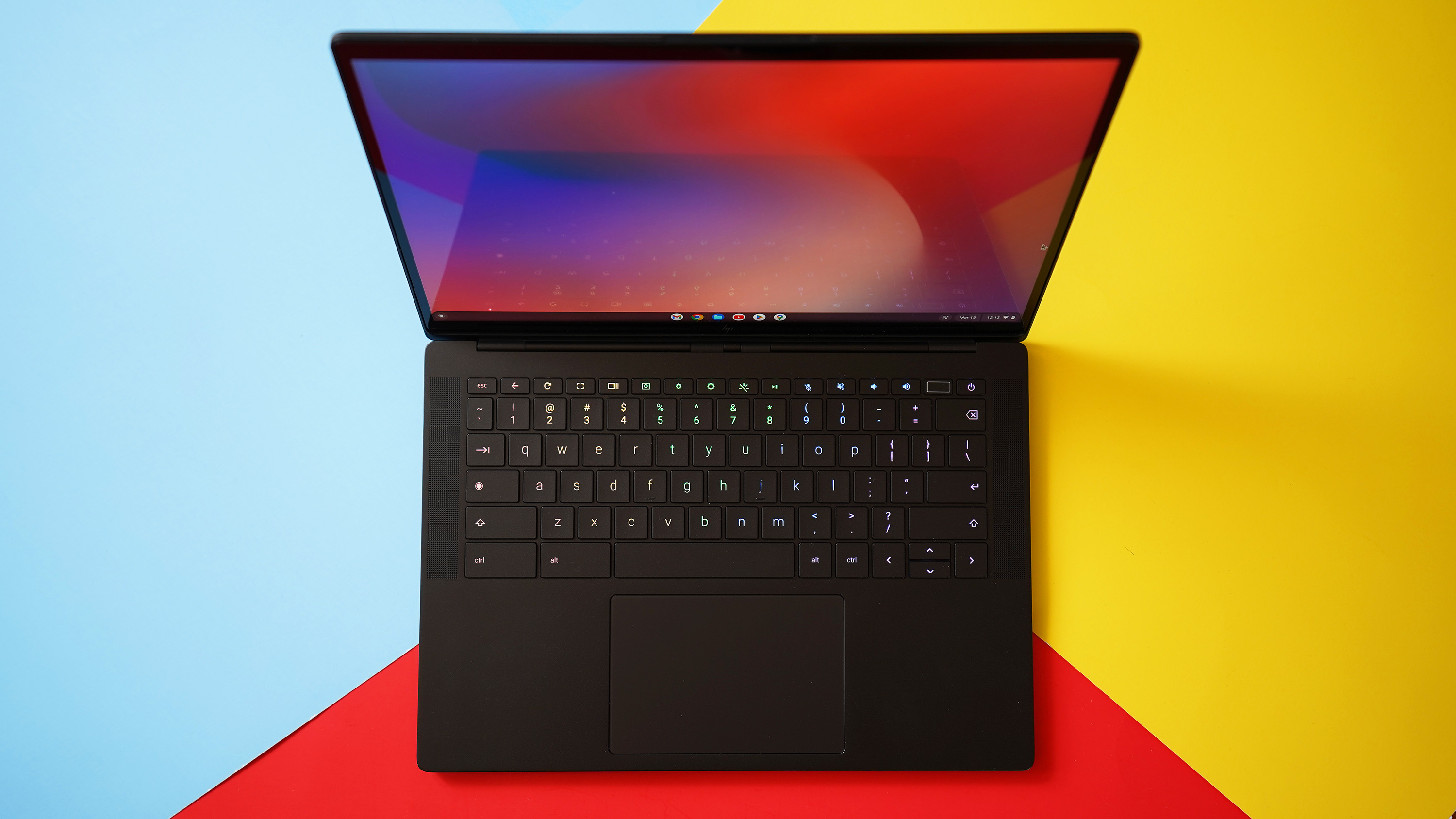'ZDNET Recommends': What exactly does it mean?
ZDNET's recommendations are based on many hours of testing, research, and comparison shopping. We gather data from the best available sources, including vendor and retailer listings as well as other relevant and independent reviews sites. And we pore over customer reviews to find out what matters to real people who already own and use the products and services we’re assessing.
When you click through from our site to a retailer and buy a product or service, we may earn affiliate commissions. This helps support our work, but does not affect what we cover or how, and it does not affect the price you pay. Neither ZDNET nor the author are compensated for these independent reviews. Indeed, we follow strict guidelines that ensure our editorial content is never influenced by advertisers.
ZDNET's editorial team writes on behalf of you, our reader. Our goal is to deliver the most accurate information and the most knowledgeable advice possible in order to help you make smarter buying decisions on tech gear and a wide array of products and services. Our editors thoroughly review and fact-check every article to ensure that our content meets the highest standards. If we have made an error or published misleading information, we will correct or clarify the article. If you see inaccuracies in our content, please report the mistake via this form.
HP Dragonfly Pro review: The best Chromebook you can buy right now


HP Dragonfly Pro Chromebook
pros and cons
- High-quality hardware with minimal deck flex
- Responsive and tactile RGB keyboard and haptic trackpad
- 8MP front-facing camera doesn't oversaturate
- Brightest touchscreen on a Chromebook
- Battery life takes a hit from all the flashy hardware
- Display viewing angles can be better
- Not everything ends with USB-C!
Last year's HP Elite Dragonfly Chromebook was a step in the right direction, both for HP's hardware ambitions and Google's ChromeOS platform. In fact, I'm in agreement that 2022 was secretly the year of Chromebooks.
But in 2023, the expectations are higher than ever for what manufacturers and Google can achieve together, especially with Apple pressing forward with what can only be M3-powered MacBooks later this year.
Enter HP's Dragonfly Pro Chromebook, an Intel-equipped laptop that the company believes will win the hearts of consumers during the hybrid era of work and play. Without spoiling the review, this is quite possibly the most ambitious Chromebook I've tested.
Here's my take on the best new features you should know about, what I'd like to see in future iterations, and, ultimately, whether the laptop is right for you, starting with the core specifications below.
Specifications
| Dimensions | 12.4 x 8.7 x 0.7 in |
|---|---|
| Weight | 3.33 lbs |
| Display | 14-inch, 16:10, LCD display with 1,200 nits |
| Processor | 12th Gen Intel Core i5-1235U |
| Memory | 256GB with 16GB of RAM (LPDDR5) |
| Battery | Up to 11.5 hours of battery life |
| Camera | 8MP user-facing camera |
| Connectivity | 4x Thunderbolt 4 USB-C ports, Wi-Fi 6E, Bluetooth 5.3, 5G (in the summer) |
| Colors | Ceramic White, Sparkling Black |
What's new with this model
There are several new features that help the HP Dragonfly Pro stand out from previous HP laptops, as well as Chromebooks in general. These are the ones you should take note of before buying.
1. An RGB keyboard with a haptic trackpad
The backlighting turns off after 30 seconds of inactivity.
Featured reviews
I'll cut right to the chase with this one: A colored keyboard sounds like a gimmick, and it very much is, but it also makes the typing experience more fun, don't you think? Colorful, glowing keycaps are typically found on gaming laptops, not Chromebooks, but HP says it exists on the Dragonfly Pro both for aesthetics and personalization.
By default, the keyboard glows in white, making it look like your ordinary, back-lit ensemble. You can always keep it that way if you prefer it over all the rainbow goodness I'm about to tell you about.
Also: The 5 best ergonomic keyboards you can buy
To reap the benefits of the Dragonfly Pro, I'd recommend two backlight settings: Rainbow and wallpaper mode. The former is your standard spread of RGB colors, which gives the Sparkling Black finish of the Chromebook some much-needed glamor. Wallpaper mode, on the other hand, adapts the colors on the keyboard to that of your backdrop. It's a personal touch that reminds me of what Google has done with Material You on Android devices.
Ultimately, HP sees the RGB keyboard as an extension of ChromeOS' personal and work profiles. Working in tandem with wallpaper mode, the color-coded keys serve as a reminder of when it's time for business and when it's time to kick back and relax.
Also: Best gaming mechanical keyboards right now
All of this is complimented by what I consider to be a MacBook Pro-level trackpad. That's as high praise as I can give for a piece of glass. The Dragonfly Pro Chromebook's trackpad is layered over a reassuring haptic sensor; the trackpad doesn't physically move when you're pressing down but reproduces a vibration that feels like it does. The response is realistic, and I've had no problems registering clicks and drags from all four corners of the trackpad.
2. Need a bright touchscreen? This one's got it
The Dragonfly Pro Chromebook has a touchscreen but not the rotating hinge that was on the Elite Dragonfly.
For users who like to work outdoors or by the window, HP has equipped the Dragonfly Pro with a gorgeous 14-inch, LCD, touchscreen display that can ramp up to 1,200 nits. That's brighter than any other touchscreen Chromebook currently available, and roughly 200 nits more than last year's Elite Dragonfly.
For my use cases, which mostly took place indoors, I found the 30% to 40% brightness range adequate enough. In fact, I had to dial it lower to prevent the display from blowing out my product shots for this review. These are all positives, by the way. It's always better to have a display that can get overly bright than one that peaks at a lower luminance.
Also: Chromebook vs. laptop: Which one best fits your needs?
Beyond the nits, the 16:10 LCD panel passes the eye test in terms of video playback, light photo editing, and daily browsing -- as long as you're not shifting the laptop around. From what I've seen, the display's viewing angles are not the most consistent, with a noticeable loss of color when you tilt the screen too far forward or back. I generally prefer a 3:2 aspect ratio, but the wider display here has served me just as well for split-screen usage. It's also more enjoyable for media and entertainment, with less letterboxing.
3. That 8MP user-facing camera is legit
Demoing the 8MP camera on Google Meet.
Can we take a moment to appreciate how good webcams have gotten since the start of the pandemic? Like the brightness rating, the 8MP camera on the HP laptop is another "world's first" when it comes to Chromebooks. HP tells me that it's co-engineered the Dragonfly Pro's webcam with Google, leveraging the Pixel team's imaging chops to capture skin tones and overall lighting more naturally (see example above).
Also: The 10 best webcams you can buy
You may be thinking, "Why did this tech reviewer just post a self-captured image to demonstrate the webcam quality instead of a screenshot?" Well, as you can see, from a participant's view, the webcam does an impressive job reproducing details and colors. My skin doesn't look oversaturated or washed out, which tends to happen one way or the other on lower-quality sensors, and the shadows behind me are spot-on, too.
For how essential video-calling has become, HP isn't selling you short on the Dragonfly Pro webcam.
What I'd like to see in the next model
As is often the case with consumer electronics, it's not all sunshine and rainbow keyboards. The HP Dragonfly Pro Chromebook still has some rough edges that I'd like to see polished with the next iteration.
1. Improved battery life
My biggest problem with the current model is the endurance, or at least how long it lasts under my usage patterns. I regularly get about five hours of power with the Dragonfly Pro Chromebook, which is not bad but also not the most impressive stat for a device that runs on one of the more efficient operating systems out there.
Also: This Chrome update should stop it from draining your battery life
HP markets the laptop as having up to 11.5 hours of battery life, though that likely involves lighter browsing, a lower brightness setting, no RGB backlighting, and power management modes. At that point, you're better off with Chromebook that doesn't have the premium features, to begin with. (I will tip my hat to HP for including a 96-watt charger in the box that's capable of taking the Dragonfly Pro from 0% to 50% in just half an hour.)
2. A laptop that weighs less
I have no complaints about a laptop that weighs between three to four pounds. My daily driver is a 16-inch MacBook Pro! But for a smaller, 14-inch machine that's geared toward digital nomads, I'm not so sure if 3.36 pounds is the sweet spot. By comparison, the Samsung Galaxy Book 3 Ultra I recently reviewed weighs a tad more at 3.95 pounds. Keep in mind that has a larger screen and a dedicated GPU among other things.
Review: Galaxy Book 3 Ultra: The laptop Samsung fans have been waiting for
The heavier form factor would be excusable if HP packed a larger battery inside or a better variety of ports, but it didn't. In the future, I'd love to see the company opt for materials like magnesium-aluminum alloy that are both lighter weight and still durable.
3. Sprinkle an HDMI port in there. Maybe USB-A, too.
If there's one cable that's grown in popularity over the past three years, it's got to be the HDMI, right? Whether you're wiring a computer to a TV or a laptop to an external monitor, an HDMI cable has you covered. Had HP embedded an HDMI port (or even a standard USB-A) in place of one of the four Thunderbolt 4s, it would've taken the Dragonfly Pro Chromebook from a 4-star rating to a 4.5-star rating.
Bottom line
All that said, the HP Dragonfly Pro Chromebook is one of the easier laptops to recommend, especially if you've already bought into the ChromeOS platform. With 16GB of RAM and a 12th Gen Intel Core i5 processor, there's little to worry about when it comes to performance and day-to-day operations. Not to mention, consistent updates over the past years have given ChromeOS a more leveled playing field between it and competing operating systems. Thanks to that maturity, HP had every opportunity to capitalize on the Dragonfly Pro's hardware -- and it most certainly did.
Should I buy one?
The HP Dragonfly Pro is not the most affordable Chromebook on the market, but its slew of hardware enhancements make the $999 price tag justifiable. If you're shopping with a $1,000 budget, this is, in my opinion, the best Chromebook that you can buy right now. I'd consider the alternatives below for reasons beyond the price.